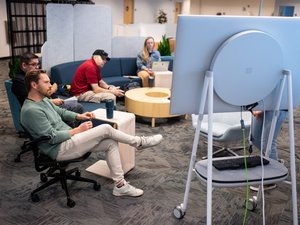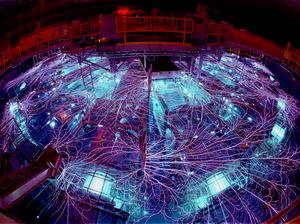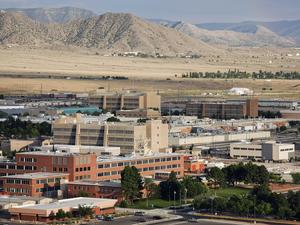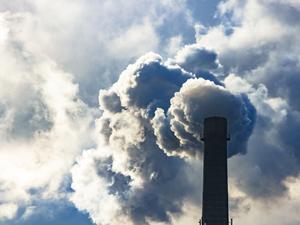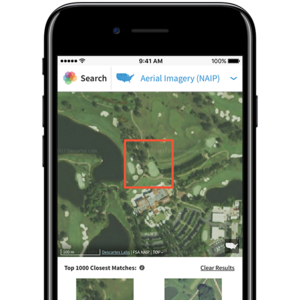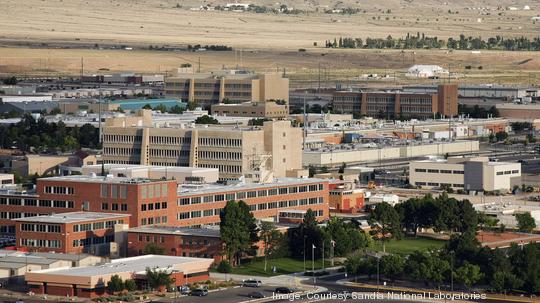
A nearly $40 million federal appropriation, introduced this summer, could support the planning and development of a new facility on the Sandia National Laboratories campus to consolidate the multifaceted work of the labs' Power Sources Technology Group.
Sandia's Power Sources Technology Group, which is home to around 120 full-time employees across six departments, covers four main mission areas. Nuclear deterrence is the largest part of the group's work, and managing the labs' energy portfolio, which includes work in grid storage and battery safety, is another segment.
Its operations span research, development, production and stockpile surveillance, and it touches "almost every mission space that Sandia has," said Sara Pecak, a senior manager for the Power Sources Technology Group. "Everything needs a power source at some level," she said. "Everything needs some sort of battery."
While the group's work is spread across a few different places on the Sandia National Laboratories campus, much of it is housed in a decades-old building in the labs' Tech Area One. Pecak said the building was constructed in 1949 and started its life as a warehouse.
Working out of a nearly 100-year-old facility has required a lot of retrofitting for additional lab and office space over the years, as the Power Sources Technology Group's mission set and employee base have expanded, she said.
"We've gone through and we've maximized the capability of what we can do in this building in terms of facilities infrastructure," Pecak told Albuquerque Business First. "So even though we are 100% accomplishing mission right now, it is challenging to us sometimes to have the agility that we need in order to switch missions, to install new equipment — we've just maxed out our facilities."
So, Sandia, through the National Nuclear Security Administration, has started the process of establishing a larger, updated Power Sources facility.
Details on the new power sources facility
That new facility would be 135,000 square feet and contain a mix of laboratory, office and other support space. It's currently in the design phase, said Perry D'Antonio, a senior manager in the Power Sources Technology Group who's overseeing the new facility's design and construction.
The design passed the first of the U.S. Department of Energy's critical decision milestones in December 2022, which took the planning from the conceptual design phase into the preliminary design phase. D'Antonio said the planning of the new facility, which will move from the current facility's existing location to a new spot in a different tech area, is close to 30% complete.
The labs are working with SmithGroup, a national architectural, engineering and planning firm headquartered in Detroit that has offices in Dallas and Phoenix, to design the new facility. Construction firms have not been selected.
Construction might not start for a while, though, depending on the passage of some federal dollars.
Federal backing through U.S. Senate appropriations
The Power Sources facility project is included under a $37.89 million appropriation in the Energy and Water Development Fiscal Year 2024 Appropriations bill, approved by the U.S. Senate Appropriations Committee in late July. If passed by Congress, those federal dollars would be used to support the planning and designing of the new facility.
U.S. Sen. Martin Heinrich (D-N.M.) is a member of the Energy and Water Development Senate appropriations subcommittee. He visited the current Power Sources facility in February 2016 and again toured the facility in September 2022 and as recently as early August of this year, according to the senator's Deputy Communications Director Caty Payette.
"The engineers and researchers in Sandia's Power Sources Technology Group are integral to safeguarding our national security," Heinrich said in a statement to Business First. "Their work on advanced battery and energy storage technologies could also have important applications as we work to firm up reliability and optimization in a decarbonized and more distributed electric grid."
"I was proud to help include this historic investment in the Energy and Water Development Appropriations bill to build the modern engineering facility that these Sandia researchers really need, and I'll keep fighting to get this bipartisan bill, along with all of our Appropriations bills, across the finish line," he continued in the statement.
It's Sandia's first line-item project in almost 20 years, according to Payette.
Next steps and design considerations
D'Antonio, the Sandia senior manager overseeing the design and construction, said the new Power Sources facility's completion timeframe depends on that federal funding. The facility's final design could extend through fiscal year 2025, and then construction could take another three to four years, so it might not be completed until around 2030, he said.
Sandia developed a "series of requirements" the architect-engineer has to use to inform the facility's design. The Department of Energy has its own, more stringent, design constraints as well, D'Antonio said.
Because the Power Sources Technology Group undergoes a lot of "mission changes," building flexibility into the new facility is one of the key components of its design. For instance, D'Antonio mentioned building in a higher level of fire protection in order to handle a wider range of potential fire hazards.
That's a key for Pecak, the power sources technology group's senior manager, as well.
"Right now we can change the rooms around that we have, but we're constrained by the way that the building was made originally," she said. "It takes us longer and it's more expensive than we want that process to be, just because sometimes we dig down and find a couple generations worth of infrastructure back there when we start doing things. So operational flexibility is one of the biggest benefits I see of the new facility."
Recruitment and retention is another benefit, D'Antonio said. Many government buildings are quite old, so having a new, fresh building that's designed with more efficiency in mind could boost the recruitment of future lab workers, especially younger people, he said.
A part of that worker-focused planning could involve keeping some aspects of the current facility, like a long hallway that Pecak said allows a lot of interaction between staff working in the building.
"I think it has some more intangible things," D'Antonio said about the new facility. "People will be happy to come to work there and feel like their work is not only important, but also that they're in an environment that's really helping them be successful and work to their full potential."
This story has been updated to clarify that the $37.89 million U.S. Senate appropriation would support the planning and development of the Power Sources facility only and does not constitute the potential full cost of the facility.
